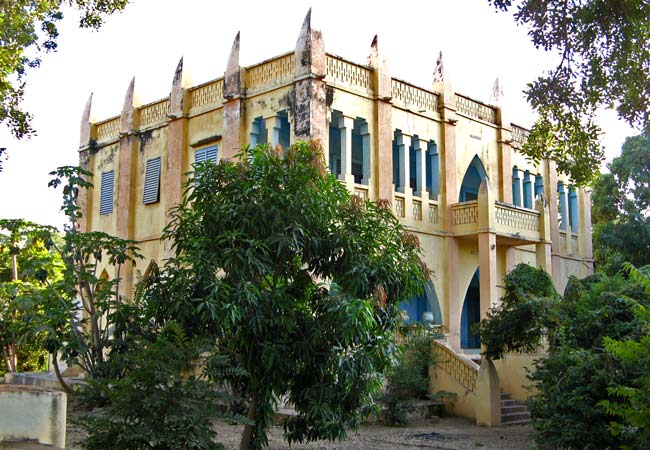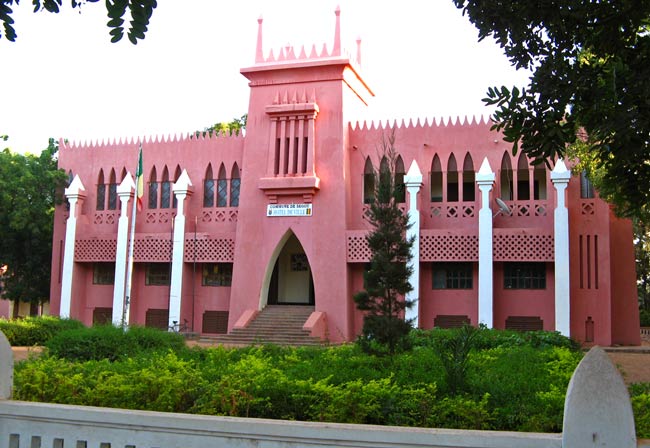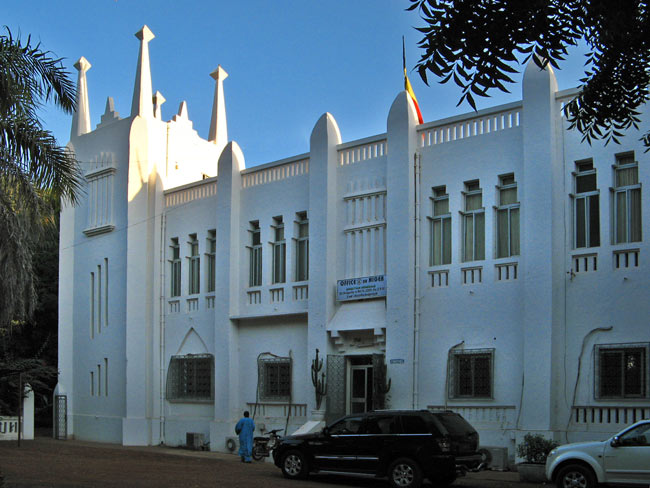November 30, 2010
To go Back at any time,
use Browser’s “Previous Page”
To understand how these distinctive colonial buildings came to be in Segou, a bit of history is helpful. Between 1880 and WWI, when imperialism ran rampant in Europe, African territories were invaded, occupied or annexed by European powers. France seized control of Mali, making it part of French Sudan. French colonial troops arrived in Segou in 1890.
One grand plan of the French in the decades that followed was to create a dam on the Niger River that would provide irrigation over an area of nearly 2 1/2 million acres. To this end, a massive dam was built at Markala, 20 miles from Segou, between 1933 and 1949, along with two irrigation canals. However, this project, called the “Office du Niger”, made use of forced labor. When that practice was outlawed in 1946, the project withered. Originally, the intent had been to benefit the French textile industry by making cotton from this area cheaply available. Eventually, that end had to be abandoned and the main crops became rice and sugarcane. Only about 10% of the originally-expected area is under cultivation. In 1960, Mali became independent. The French withdrew, abandoning --- among other things --- their colonial buildings in Segou, which had been their administrative headquarters.
The government area where these buildings are located has wide streets, huge trees, big properties and impressive architecture. We walked several blocks, admiring some buildings, grimacing at others. The condition of these old relics is a mixed bag. Some of them are beautifully kept:

Others seem destined for rack and ruin:

Most could benefit from at least some refurbishment:

... while others look pristine:

Of course, that one is city hall.
This last building displays an “Office du Niger” plaque over the door, a reminder that that organization still functions:

Presumably, under French rule, all of these buildings housed government ministries. That appears still to be true today --- it certainly is true of the last two.